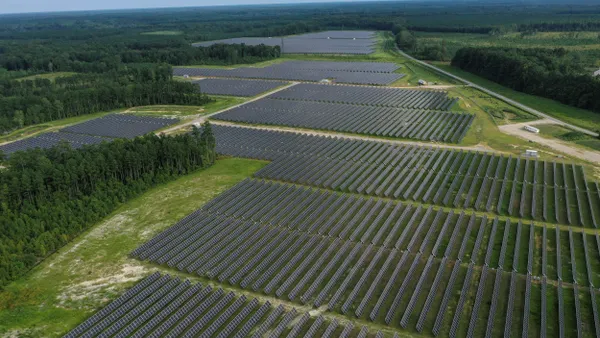Dive Brief:
-
The New York Public Service Commission (PSC) last week took two steps aimed at bringing the state closer to meeting its climate goals.
-
The PSC accepted the results of the environmental assessment it commissioned of the state's Energy Storage Roadmap, an action that brings the agency one step closer to implementing the state's target of installing 1,500 MW of energy storage by 2025.
- The PSC also expanded the types of technologies that are eligible to meet the state's Clean Energy Standard to include stand-alone storage systems such as regenerative braking, with a rated capacity of 5 MW or less. Tidal energy generators, biomass generators and certain food-waste digestion configurations will also be eligible for compensation.
Dive Insight:
The detailed New York Energy Storage Roadmap lays out a comprehensive vision for using energy storage to meet the state's energy goals, such as meeting 50% of electric power needs with clean energy sources by 2030.
Democratic Gov. Andrew Cuomo has called for an energy storage target of 1,500 MW by 2025. But the roadmap's overall analysis, conducted by the Department of Public Service and the New York State Energy Research and Development Authority, supports an even more aggressive target, as high as 3,000 MW. And, as analysts have noted, moving the target to 2030 would better align the deadline of the state's Clean Energy Standard with the energy storage target and allow more time to meet a higher target.
The environmental review of the roadmap found that energy target would bring positive environmental impacts such as reductions in peak load demand during critical periods, increases in the efficiency of the grid and the displacement of fossil fuel generation by allowing greater integration of renewable energy resources.
Storage systems could mitigate the impact of as much as 2 million metric tons of avoided greenhouse gas emissions and reduce the level of criteria air pollutants, such as nitrogen oxides, sulfur oxides and particulate matter, the PSC said.
With the environmental impact assessment of the roadmap approved by the PSC, the plan moves one step closer to implementation.
In a separate action, the PSC expanded the types of technologies that qualify to meet the state's Clean Energy Standard. For the first time, some stand-alone storage systems will be eligible to help meet the clean energy target.
"New York's Clean Energy Standard laid the groundwork to create enough renewable energy to meet half of the State's electricity needs by 2030," PSC Chair John Rhodes said in a statement.













